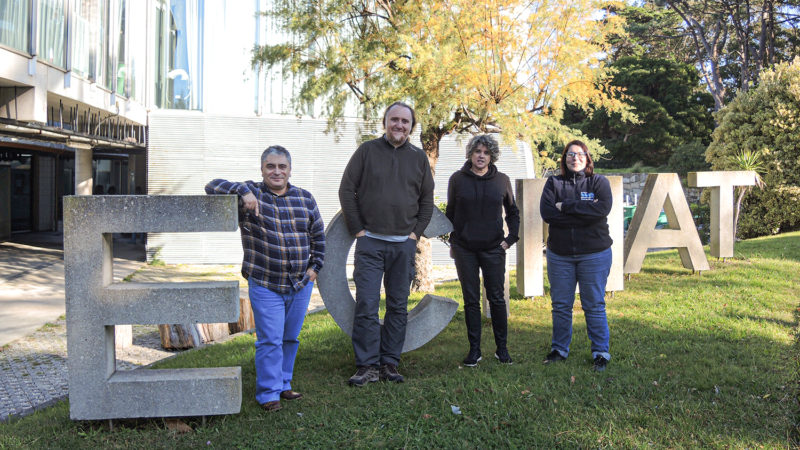Sea urchins have evolved from a secondary species into a high-demanded product that has pushed the local fisheries to develop a exploitation plan for this resource that will ensure its sustainability. The demand in the Spanish market – that have just recently discovered its flavour- as well as the increasing external demand consequently made both the extracted tonnes of resource and the value skyrocketed.
In this context, both the research community and the local fisheries management bodies have pushed to develop plant to improve their culture, both from the reproduction and repopulation point of view. In this line of developments, OCIMER was born as an initiative from ECIMAT to optimize the culture of sea urchins Paracentrotus lividus (Lamarck, 1816) from an integral point of view. OCIMER will consist of two years of intensive research with a funding of 148,420 € as part of the Pleamar program funded by Fundación Biodiversidad, who funds 70% of the costs thanks to the European Maritime and Fisheries Fund (EMFF).
OCIMER´s Principal Researcher is the ECIMAT director, Jose Manuel García Estévez, together with Damián Costas Costas who is in charge of the Unit of Biological Resources and Marine Culture at ECIMAT and Estefania Paredes Rosendo, a researcher from the ECOCOST lab from CIM-UVigo, who is in charge of the Marine Biological Resources Functional Preservation Service also at ECIMAT.
Estefanía Paredes explains that the aim of the project is to optimize the culture of Paracentrotus lividus from an integral point of view in order to promote the sustainability of the fishery and aquaculture of the species, as well as the conservation on the biodiversity. OCIMER will work on three main branches, says Paredes, “On one side there is a research line that is oriented to study juvenile production and repopulation in fisheries and for that we count with a local fishery management team from the fisher guild of Cofradía de Pescadores de San José de Cangas as partners. Another line of work is oriented towards the analysis of diets and culture conditions of sea urchins to improve gonad roe quality with the goal of increasing market value. Finally, researchers will also work towards biodiversity conservation of sea urchins within the area that encloses Ría de Vigo and the influence area of the Illas Atlanticas National Park by developing cryopreservation protocols for several local species of sea urchins that will be stored at ECIMAT’s biobank”.
Three research lines
Regarding the repopulation efforts, OCIMER´s research team will evaluate methods and prior studies regarding the natural composition of the populations and interactions with other species in order to value potential repopulation efforts on the local marine ecosystem. There will be intensive research in tagging sea urchin juveniles to both determine the suitable tagging system and the size of the juveniles more appropriate. In this line of work the team will gather data on the survival and recapture of tagged individuals. Another important task will be the study of juvenile development and growth, both to optimize the juvenile production in land with special focus on two crucial moments, the larval development and the settlement/metamorphosis.
Another part of the research proposed within OCIMER is the addition of autochthonous sea urchin species to a biobank. Estefania Paredes explains “we aim to develop cryopreservation protocols for biological and reproductive material from different local species of sea urchins” and such samples will be part of the biobank of marine organisms at ECIMAT inside CIM-UVigo “The efforts will focus on Sphaerechinus granularis, Paracentrotus lividus and Echinocardium cordatum”
Finally it is also important to design improved diets that will improve sea urchin gonad condition, texture and colour from the natural environment prior entering the market. In order to achieve this there will be a sensory analysis of the roe in order to identify improvements.
At the end of these two years, the team will create a manual for sea urchin culture and the results will be published in international specialized journals and divulgated through their social media @ocimerUvigo. Follow them for updates.
Source: DUVI

